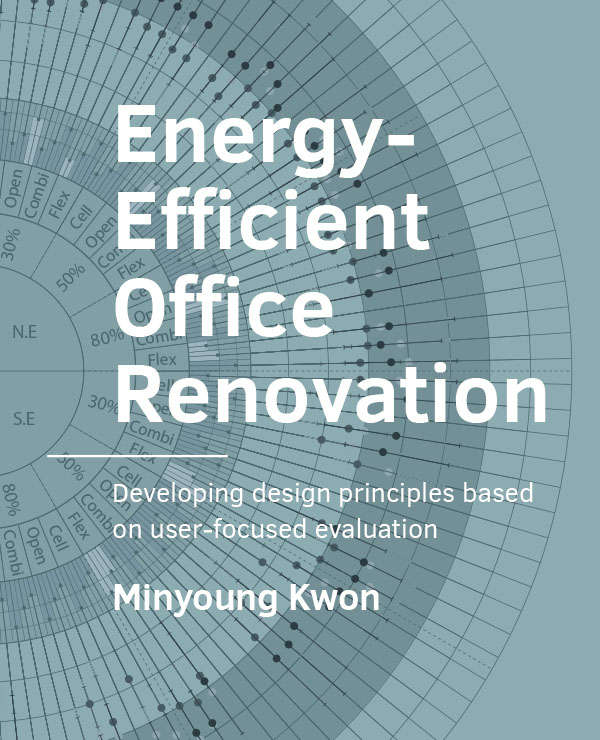Evaluation of user’s thermal perception and satisfaction towards indoor environmental quality
DOI:
https://doi.org/10.7480/abe.2020.15.4450Abstract
Chapter 3 compared the building characteristics of renovated offices such as façade types and the HVAC system and energy consumption with different units. These physical building characteristics do not only contribute to energy performance but also to the indoor environment. For user satisfaction studies, a comfortable indoor environment is one of the primary conditions of the working environment. Therefore, it is important to identify the impact of indoor climate on user satisfaction in different office buildings (technical attributes of renovated office buildings). The purpose of this chapter is to identify the impact of indoor climate on user satisfaction, comparing how much they are satisfied with the indoor climate to temperature and relative humidity and how much the users can adapt the certain temperature.
Section 4.2 presents the data collection for 2 weeks in three seasons: summer, winter, and the intermediate season. Monitored indoor climate such as temperature, and relative humidity is compared in section 4.3. Section 4.4 compares the occupants’ thermal sensation, preference and satisfaction with physical measurements are compared in section 4.3. Lastly, the predicted optimal thermal conditions, and limitations are discussed in section 4.5.
References
Arens, E., Humphreys, M. A., de Dear, R., & Zhang, H. (2010). Are ‘class A’temperature requirements realistic or desirable? Building and Environment, 45(1), 4-10.
ASHRAE, A. S. (2013). Standard 55-2013. Thermal environmental conditions for human occupancy, 12.
Standard 55–2010. Thermal Environmental Conditions for Human Occupancy, (2010).
Standard, A. S. H. R. A. E. (2017). Standard 55–2017 Thermal Environmental Conditions for Human Occupancy. Ashrae: Atlanta, GA, USA.
Bluyssen, P. M. (2013). The Healthy Indoor Environment: How to assess occupants’ wellbeing in buildings: Taylor & Francis.
Brager, G., & Baker, L. (2009). Occupant satisfaction in mixed-mode buildings. Building Research & Information, 37(4), 369-380.
Cena, K., & Clark, J. A. (1981). Bioengineering, Thermal Physiology and Comfort: Elsevier Science.
Cosma, A. C., & Simha, R. (2018). Thermal comfort modeling in transient conditions using real-time local body temperature extraction with a thermographic camera. Building and Environment, 143, 36-47. doi:https://doi.org/10.1016/j.buildenv.2018.06.052
D’Oca, S., Corgnati, S., Pisello, A. L., & Hong, T. (2016). Introduction to an occupant behavior motivation survey framework. Paper presented at the Clima.
De Dear, R., & Brager, G. S. (1998). Developing an adaptive model of thermal comfort and preference.
Hensen, J. L. M. (1991). On the thermal interaction of building structure and heating and ventilating system: Technische Universiteitt Eindhoven.
Hoyt, T., Arens, E., & Zhang, H. (2015). Extending air temperature setpoints: Simulated energy savings and design considerations for new and retrofit buildings. Building and Environment, 88, 89-96.
Huizenga, C., Abbaszadeh, S., Zagreus, L., & Arens, E. A. (2006). Air quality and thermal comfort in office buildings: results of a large indoor environmental quality survey.
Humphreys, M. A., Establishment, B. R., & Station, B. R. (1975). Field Studies of Thermal Comfort Compared and Applied: Building Research Station.
Luo, M., Arens, E., Zhang, H., Ghahramani, A., & Wang, Z. (2018). Thermal comfort evaluated for combinations of energy-efficient personal heating and cooling devices. Building and Environment, 143, 206-216. doi:https://doi.org/10.1016/j.buildenv.2018.07.008
Nicol, F., Humphreys, M., & Roaf, S. (2012). Adaptive Thermal Comfort: Principles and Practice: Taylor & Francis.
Rijal, H. B., Humphreys, M. A., & Nicol, J. F. (2017). Towards an adaptive model for thermal comfort in Japanese offices. Building Research & Information, 45(7), 717-729. doi:10.1080/09613218.2017.1288450
Sant’Anna, D. O., Dos Santos, P. H., Vianna, N. S., & Romero, M. A. (2018). Indoor environmental quality perception and users’ satisfaction of conventional and green buildings in Brazil. Sustainable Cities and Society, 43, 95-110. doi:https://doi.org/10.1016/j.scs.2018.08.027
Shikdar, A. A., & Al-Kindi, M. A. (2007). Office ergonomics: deficiencies in computer workstation design. International Journal of Occupational Safety and Ergonomics, 13(2), 215-223.
Tham, K. W., & Willem, H. C. (2010). Room air temperature affects occupants’ physiology, perceptions and mental alertness. Building and Environment, 45(1), 40-44. doi:http://dx.doi.org/10.1016/j.buildenv.2009.04.002
Tsai, D.-H., Lin, J.-S., & Chan, C.-C. (2012). Office workers’ sick building syndrome and indoor carbon dioxide concentrations. Journal of occupational and environmental hygiene, 9(5), 345-351.
Vellei, M., Herrera, M., Fosas, D., & Natarajan, S. (2017). The influence of relative humidity on adaptive thermal comfort. Building and Environment, 124, 171-185.
Verhaart, J., Veselý, M., & Zeiler, W. (2015). Personal heating: effectiveness and energy use. Building Research & Information, 43(3), 346-354.
Vischer, J. C. (2008). Towards a user-centred theory of the built environment. Building Research & Information, 36(3), 231-240. doi:10.1080/09613210801936472

